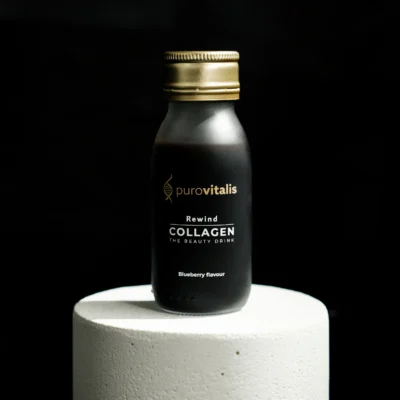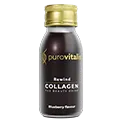
table of contents
Vitamin B6 is a water-soluble, essential vitamin—your body can’t produce it on its own, so you have to get it through diet or supplements. Its name reflects its place in the B-vitamin family—it was the sixth compound discovered in this group. It refers to several related forms that all support important functions in the body.
These include pyridoxal, pyridoxine, and pyridoxamine, which the body converts into the active form pyridoxal-5′-phosphate. This is the version that performs most of B6’s roles and circulates in the blood.
Vitamin B6 is extremely important for longevity since it helps with mood regulation, immune support, turning food into energy, and producing red blood cells[1]. Read more about B6’s benefits in our blog: Vitamin B6 benefits.
The good news is that, in most cases, getting enough vitamin B6 doesn’t take much effort. It’s naturally present in many everyday foods—likely some of your favorites already. In this blog we will take a closer look at the best natural sources of B6 and how they can fit easily into your daily meals and how to get B6 via supplements.
Definition of a vitamin
A vitamin is a nutrient your body needs in small amounts to stay healthy. Most can’t be made by the body, so they come from food or supplements. Vitamins are either water-soluble (like B and C) or fat-soluble (like A, D, E, and K).
Foods rich in vitamin B6
Vitamin B6 is found in a wide variety of everyday foods. If you eat a varied and balanced diet, you’ll usually get enough without needing to think too much about it. Here’s a selection of healthy foods that can help you meet your B6 needs through your daily meals.
Selected foods rich in vitamin B6
| Food | Amount | B6 content | % Daily value (DV)* |
|---|---|---|---|
| Chickpeas, canned | 1 cup | 1.1 mg | 65% |
| Beef liver | 100 g | approx. 0.9 mg | 53% |
| Salmon | 100 g | approx. 0.6 mg | 35% |
| Chicken breast | 100 g | 0.5 mg | 29% |
| Banana | 1 medium | 0.4 mg | 25% |
| Potatoes, boiled | 1 cup | 0.4 mg | 25% |
| Bulgur, cooked | 1 cup | ~0.2–0.3 mg | ~15% |
| Cottage cheese | 1 cup | 0.2 mg | 12% |
These natural vitamin B6 sources each offer unique nutritional benefits, making it a natural way to combine them into balanced meals.
Chickpeas, canned | 1 cup | 65% of your daily value
Chickpeas are a convenient and nutritious source of vitamin B6, providing over 65% of the recommended daily intake per cup. Their mild flavor and firm texture make them easy to incorporate into a wide range of meals—from salads and soups to dips like hummus—adding both substance and nutritional value. In other words; they are one of the most versatile vitamin B6 sources, ideal for plant-based meals.
Beef liver | 100 g | 53% of your daily value
Another rich source of vitamin B6 is beef liver. One serving provides about 53% of your daily value, making it a practical option if you’re aiming to increase your intake. Whether prepared as pâté or lightly pan-fried, it adds a nutrient-dense boost to your meal.
Salmon | 100 g | 35% of your daily value
Salmon isn’t just good for omega-3s—it also offers a solid amount of vitamin B6. A standard portion of salmon gives you about 35% of your daily value, so it’s a tasty way to support your B6 levels while enjoying heart-healthy fats
Chicken breast | 100 g | 29% of your daily value
Chicken breast is a reliable and lean protein, and an easy-to-add natural vitamin B6 source. One serving gives you around 0.5 mg of B6, covering roughly 29% of your daily value. Grilled, roasted, or added to a hearty salad, it’s an easy way to support your B6 intake without much effort.
Banana | 1 medium size | 25 % of your daily value
A banana is easy to grab on the way out the door—and it brings more than just natural sweetness. One medium banana gives you around 0.4 mg of vitamin B6, which covers about 25% of your daily value. It’s a handy option when you want something quick that still supports your daily nutrient intake.
Potatoes, boiled | 1 cup | 25 % of your daily value
Boiled potatoes might look basic, but they’ve got more to offer than you’d think. One cup serves up about 25% of your daily vitamin B6 needs, making them a surprisingly good contributor to your nutrient intake. Whether mashed, roasted, or simply boiled, potatoes are an easy way to round out a meal with something both comforting and nutritious.
Bulgur, cooked | 1 cup | ~15% of your daily value
Bulgur is a quick-cooking whole grain that adds both texture and nutrients to your meals. A cooked cup contributes a decent amount of vitamin B6, helping you cover part of your daily needs with minimal effort. It works well in salads, grain bowls, or as a base for warm dishes—an easy way to bring more variety and B6 into your diet.
Cottage cheese | 1 cup | 12% of your daily value
Cottage cheese isn’t just a protein-packed snack—it also offers a bit of vitamin B6. One cup gives you around 0.2 mg, which adds up to about 12% of your daily value. Enjoy it on its own, with fruit, or mixed into a savoury meal for a light and creamy way to support your B6 intake.
Our tip
Make a colourful salad with chickpeas, bulgur, grilled chicken, and your favourite veggies. Top it with a boiled egg or a spoon of cottage cheese. It’s an easy lunch or dinner that brings B6 from several sources in one meal.
Vitamin B6 as support for collagen and skin
Vitamin B6 is one of the carefully selected ingredients in our Rewind Liquid Collagen. It plays an important role in protein metabolism and supports processes that are essential for collagen production and maintenance. B6 helps the body break down and utilise amino acids—the building blocks of collagen—and contributes to skin structure, elasticity, and natural repair.
By including vitamin B6 in the formula, we aim to support the body’s ability to make the most of the collagen peptides—helping maintain healthy skin, joints, and connective tissue in a simple and thoughtful way.
Want to know more about Purovitalis Rewind Liquid collagen click here:
Bioavailability of vitamin B6 in food sources
When it comes to vitamin B6, bioavailability can vary depending on the food source. Animal-based vitamin B6 sources—like meat, poultry, and fish—are generally easier for the body to absorb, as vitamin B6 in these foods is found in forms the body can use directly.
In plant-based foods, B6 often appears in a form that is bound to other natural compounds, which makes it harder for the body to absorb efficiently. That means you may not get as much usable B6 from plant sources, even if the total content is similar [3].
Definition of bioavailability
The amount of a nutrient or substance that enters the bloodstream and can be used by the body after it’s consumed. It shows how well the body absorbs and uses what you take in through food or supplements.
Foods with added vitamin B6
To help ensure adequate intake of B vitamins, some food manufacturers add vitamins to products like breakfast cereals, plant-based drinks, and bread. These are known as fortified foods.
A large Irish study conducted between 2008 and 2019 looked at the diets of 953 individuals aged 60 and over to assess how fortified foods influence B-vitamin levels. The results showed that blood levels of folate, B12, B6, and riboflavin increased as the number of fortified food servings rose—from none to more than seven portions per week. At the same time, homocysteine levels, which are associated with cardiovascular risk, decreased[4].
However, it’s worth noting that some of these foods can be high in sugar and may not always be the ideal choice — they can sometimes appear healthier than they actually are, so consider sticking to either natural B6 sources or supplements.
Definition of Homocysteine
Homocysteine is an amino acid formed during protein breakdown. High levels in the blood may increase the risk of heart disease. Vitamins B6, B12, and folate help regulate it.
Vitamin B6 as a supplement
The amount of vitamin B6 in supplements varies widely – from small doses in multivitamins and B-complex products – typically 1.3–2 mg – which support energy metabolism, immune function, and the nervous system, to high-dose products providing up to 25 mg per serving – more than 2,000% of the recommended daily value.
Supplements can be a reliable and effective source of vitamin B6, especially for people with low dietary intake, increased needs, or reduced absorption due to age or health conditions. The most commonly used form in supplements is pyridoxine hydrochloride, which is well absorbed by the body.
Is vitamin B6 safe?
Vitamin B6 is generally safe at levels that meet daily needs. But long-term intake of high doses – especially above 50 mg per day – has been shown to cause side effects such as sensory nerve damage, resulting in tingling or numbness in the hands and feet.
This is why EFSA established a new tolerable upper intake level of 12 mg per day for adults in 2023, including pregnant and breastfeeding women. The limit is based in part on a 1987 study in which women with PMS developed nerve damage after long-term daily intake of 50 mg. The 12 mg limit covers total intake from both food and supplements and aims to protect sensitive individuals.
Find the full blog here about dosage and toxicity: Vitamin B6 Dosage and Toxicity – The Safety Guide
EFSA: European Food Safety Authority
An independent EU agency that evaluates food-related risks and sets safe intake levels for nutrients and supplements, including upper limits for vitamins like B6.
Peter Attia and vitamin B6
Longevity expert Dr. Peter Attia includes vitamin B6 on his personal supplement list, highlighting its role in homocysteine regulation and brain function. You can read more about Peter Attia and view his full list in the blog here: Peter Attia’s Supplements: What he takes & insights from his book
Vitamin B6 rich foods: Simple choices, big impact
Getting enough vitamin B6 doesn’t have to be complicated. Many everyday foods—like chickpeas, salmon, bananas, and potatoes—are among the most accessible natural vitamin B6 sources available. While supplements can be useful in some cases, a varied diet with these B6-rich foods is often enough to support your energy, mood, immunity, and collagen production. Small changes to your meals can make a big difference.
References
- Munteanu, C., & Schwartz, B. (2024). B Vitamins, Glucuronolactone and the Immune System: Bioavailability, Doses and Efficiency. Nutrients, 16(1), 24. https://doi.org/10.3390/nu16010024
- Office of Dietary Supplements. (2023, June 16). Vitamin B6 Fact Sheet for Health Professionals. National Institutes of Health (NIH). https://ods.od.nih.gov/
- Bjørke-Monsen, A.-L., & Ueland, P. M. (2023, December 18). Vitamin B6: A scoping review for Nordic Nutrition Recommendations 2023. Food & Nutrition Research, 67
- Clements, M., Ward, M., Hughes, C. F., Hoey, L., Strain, J. J., Molloy, A. M., & McNulty, H. (2024). Impacts of fortified foods and supplement use on B-vitamin status in older adults: Findings from the TUDA study. Proceedings of the Nutrition Society, 83(OCE4), E275.

Experience the best of Collagen with Purovitalis liquid formula. Try it out!










